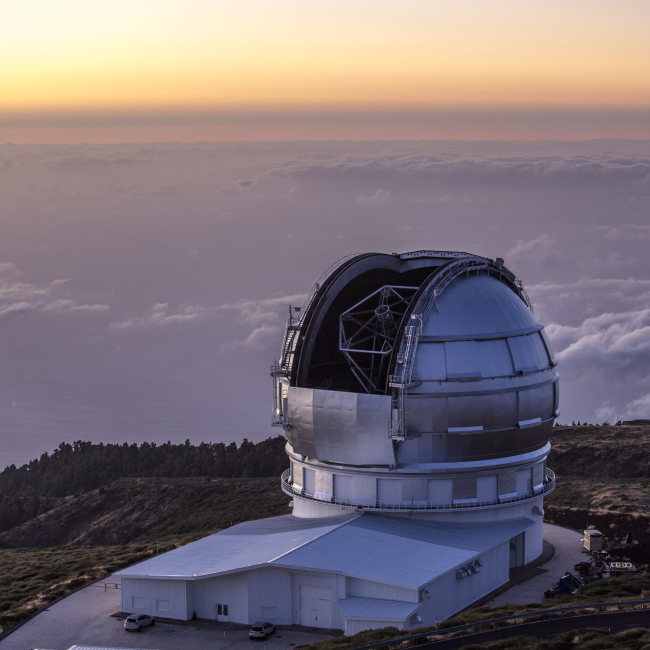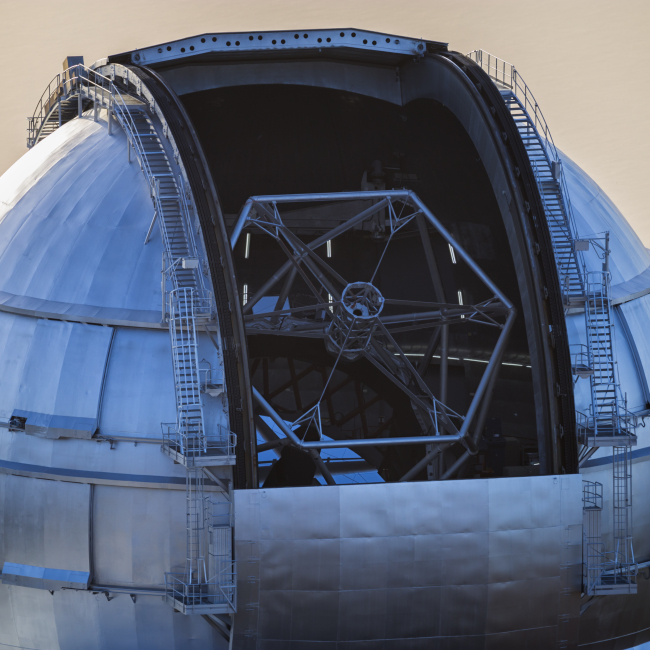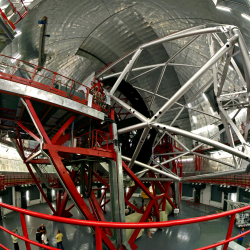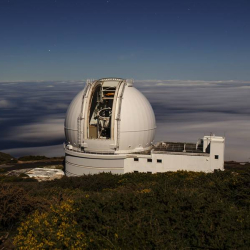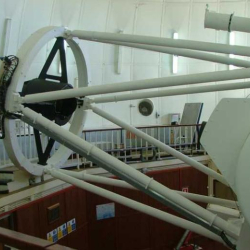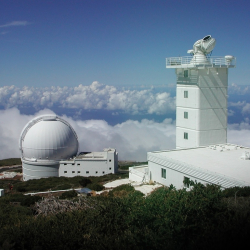Gran Telescopio Canarias
Santa Cruz de Tenerife
Spain
At Roque de los Muchachos Observatory (ORM), on the rim of the Taburiente National Park, at 2396 metres above sea level in the municipality of Garafía (La Palma) stands one of the largest arrays of telescopes in the world.
Descripción
The GTC's primary mirror, that uses thin mirror technology to keep down weight, is made up of 36 hexagonal segments, which, when put together, have a light-collecting surface of 75.7 m2, equivalent in size to a single, circular mirror with a diameter of 10.4 metres. As well as the primary mirror, the GTC will have a secondary and a tertiary mirror to deflect light to the foci, where scientific instruments can be mounted.
Image quality is crucial and, in addition to its large light-collecting surface, the GTC will use two systems to optimize it active optics and adaptive optics. Active optics will be used to align, bend and move the mirrors (the primary and secondary mirrors) to keep them in exactly the same shape and position regardless of external conditions such as the weather, temperature, gravity and manufacturing imperfections that would otherwise affect image quality.
Adaptive optics is a new technology being developed for the world's leading telescopes that involves the use of flexible mirrors to compensate for the aberrations caused to light as it passes through the earth's atmosphere. When in place, it will allow the Universe to be observed almost as clearly as if there were no atmosphere.
The mount is of altazimuth type to allow the telescope to swing in two directions the horizontal and the vertical - and its mechanical structure allows observation free from vibrations, which will also reduce the clarity of the image.
In addition, the telescope has a dome to protect it it will prevent exterior and interior air turbulence, which can degrade the image.
The GTC will use observing time efficiently by employing a "queue scheduling" system of observation, a process that automatically decides which instruments and what types of observations are most suited to the atmospheric conditions at any given time. It will also have an advanced control system and will be highly reliable thanks to a programme of preventive maintenance designed to deal with problems before they arise. This will ensure that downtime caused by system failure is kept to a minimum.
Datos técnicos del telescopio
- Optical System Type: Reflector or Newtonian Telescope
- Mount Type: Equatorial Mount
- Mount Movement Type: Computerized Mount




